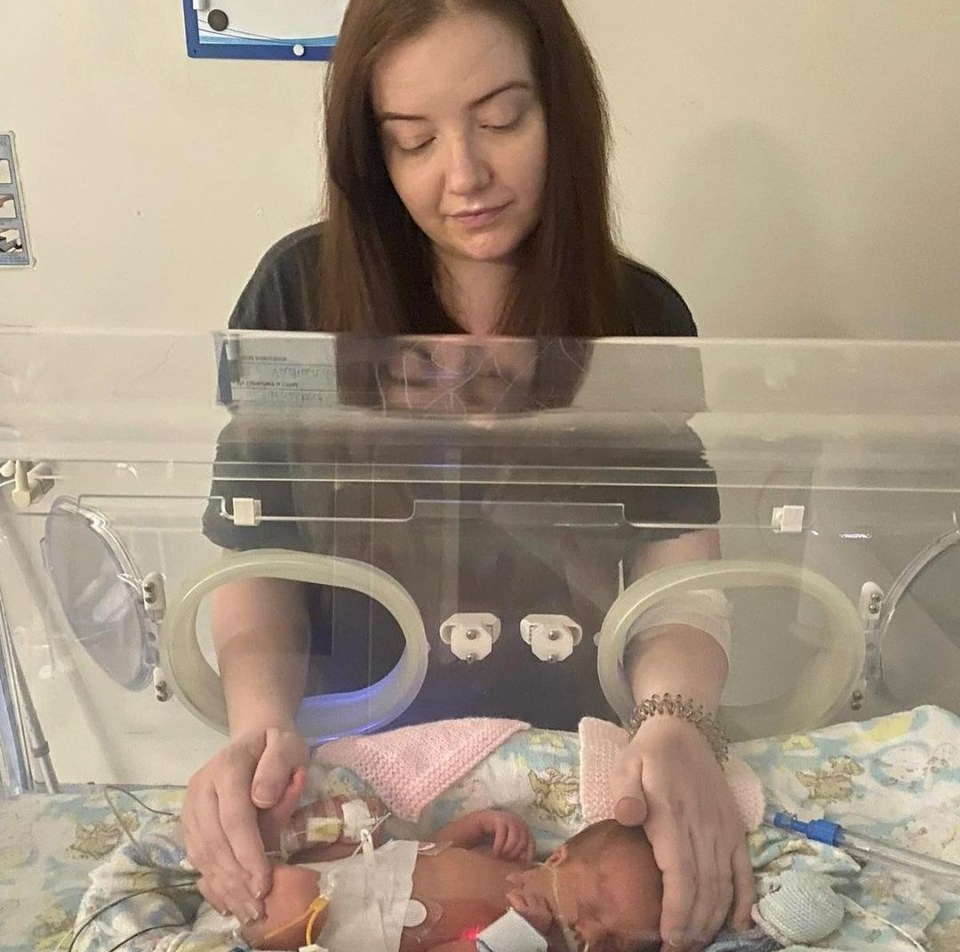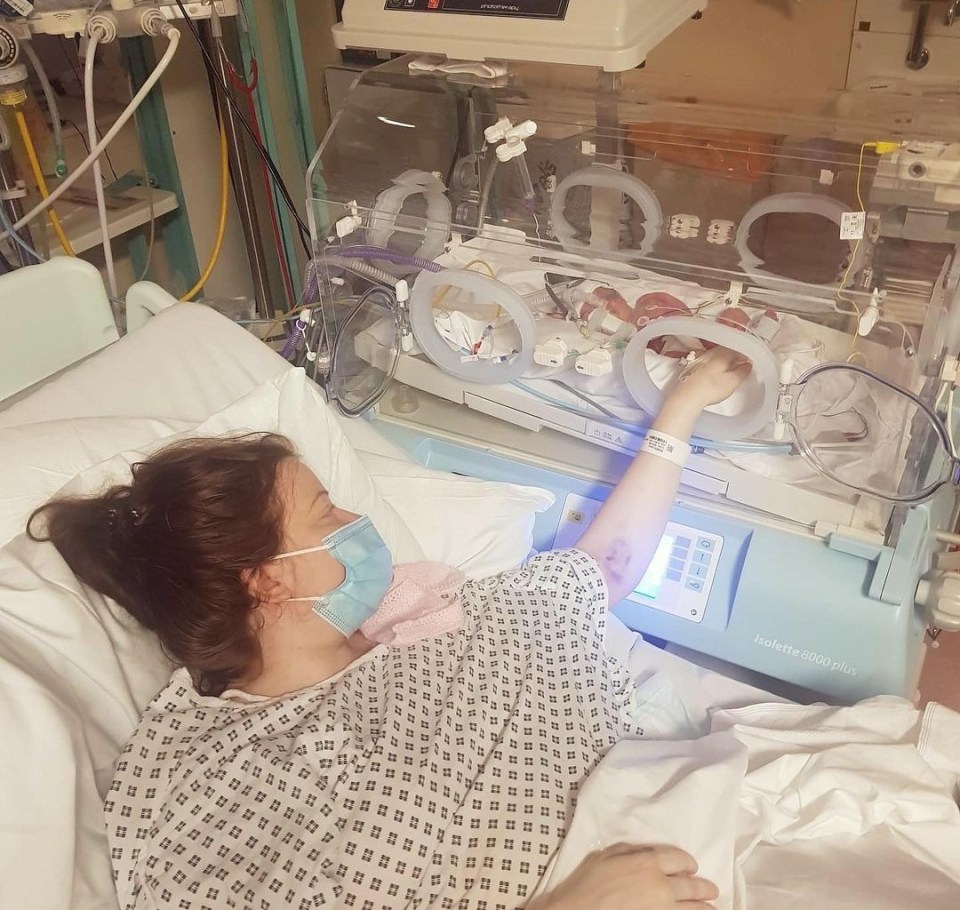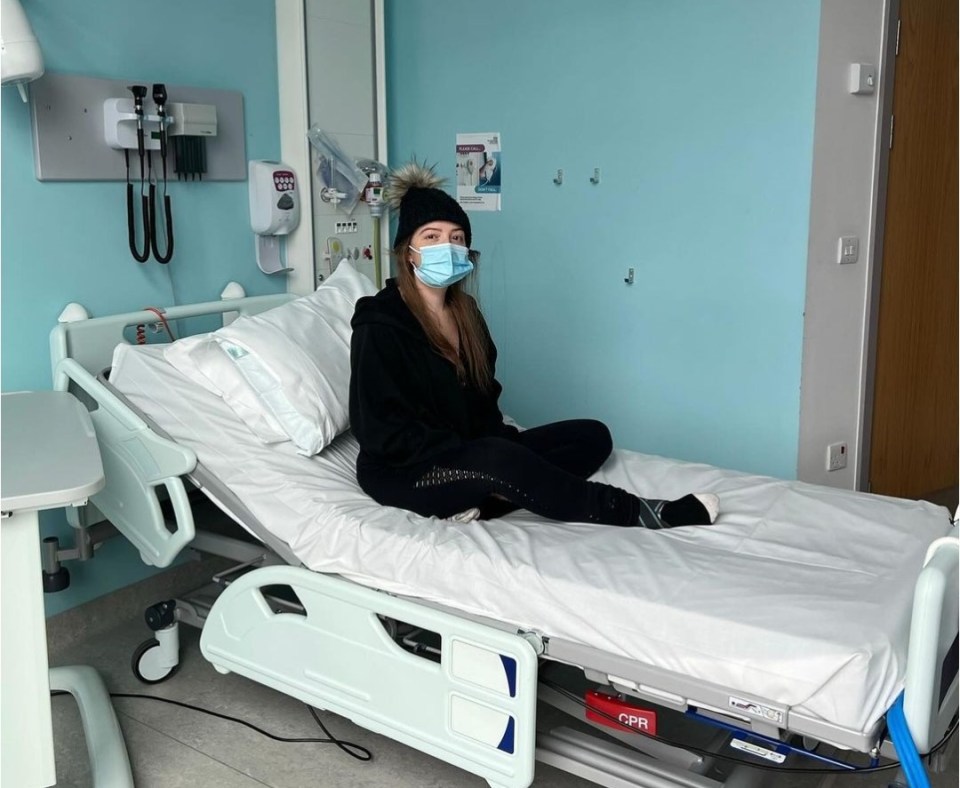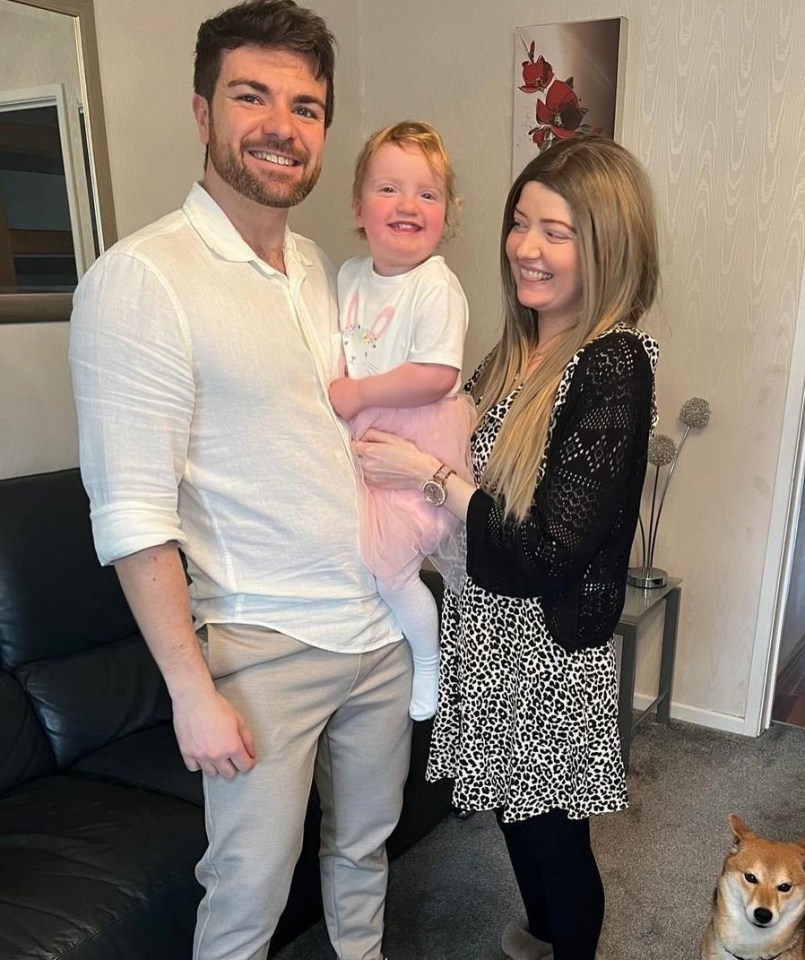A MUM put a strange symptom in her toes down to pregnancy niggles – but she was given just a year to live after a catastrophic scan revealed the true cause.
Laura Mahon, 31, had no idea that her world was about to come crashing down while pregnant for the first time.
10
Laura Mahon, 31, received a shocking diagnosis after not being able to curl her toes while pregnantCredit: Cover Images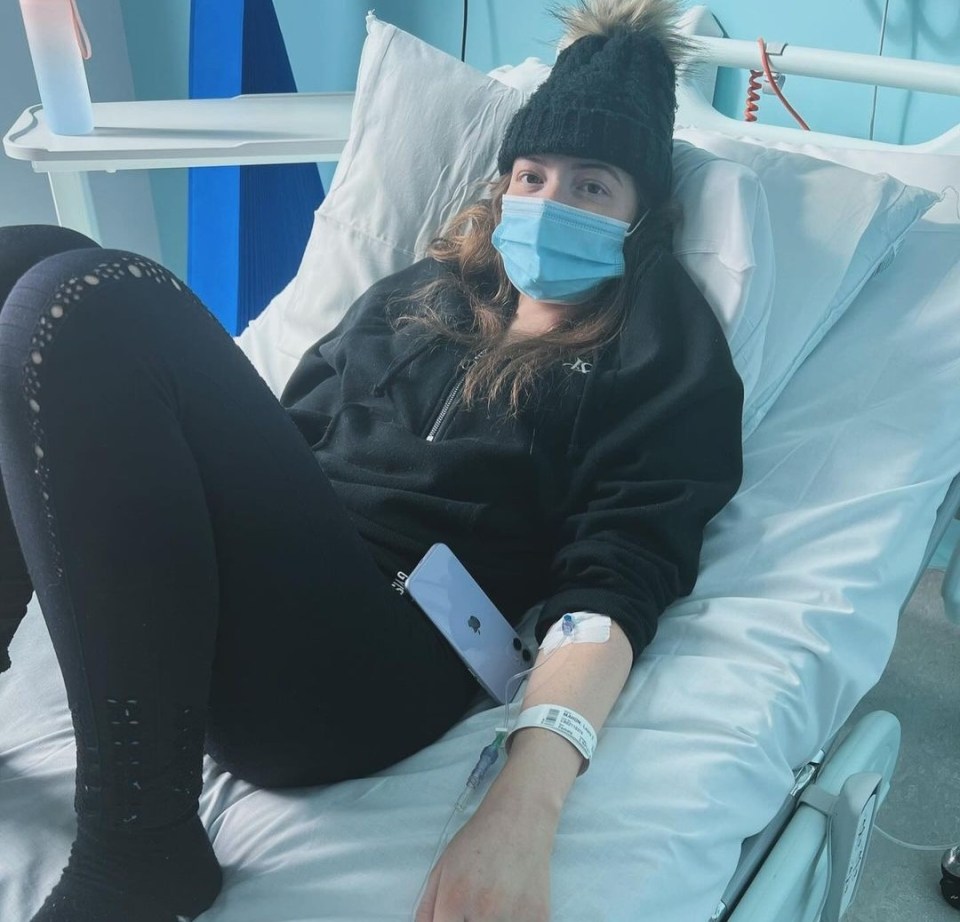
10
The mum-to-be was told she had a brain tumourCredit: Cover Images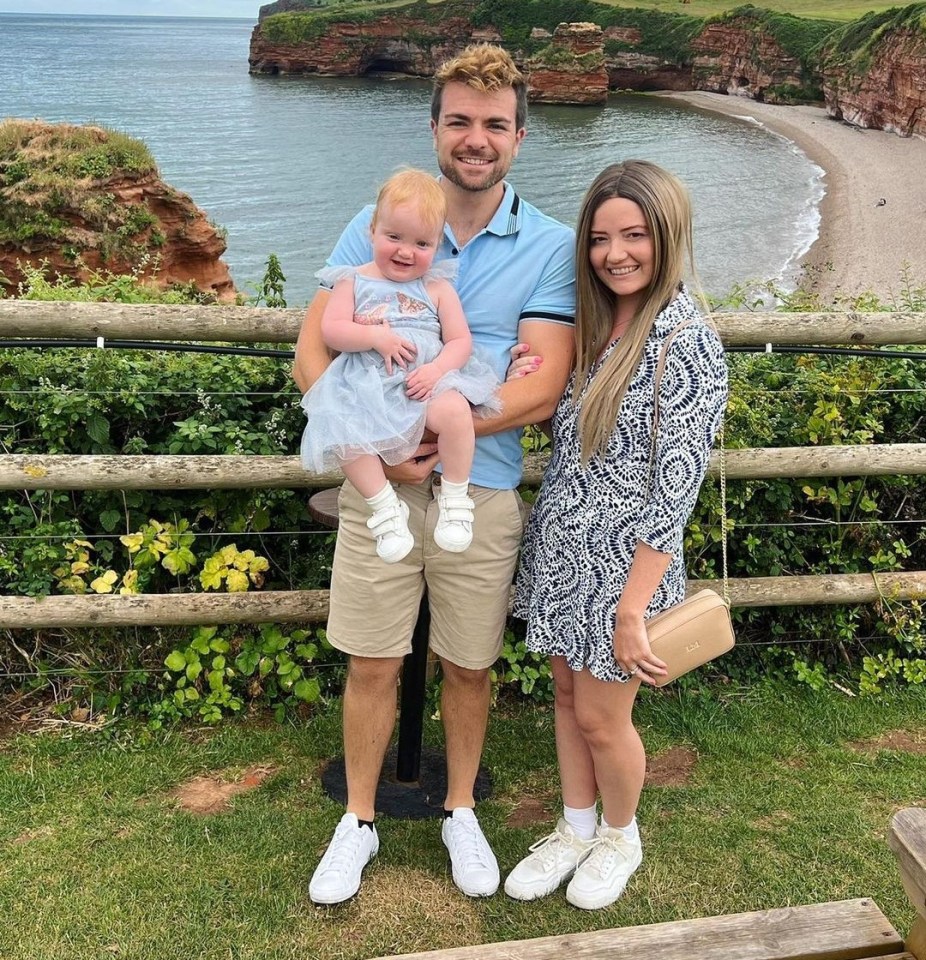
10
Laura was faced with starting treatment or continuing her pregnancyCredit: Cover Images
The mum was five months pregnant when she woke up unable to feel her toes in September 2021.
Laura said: “I woke up and realised that my toes on my right foot weren’t moving.
“I didn’t think too much about it, after all I was pregnant and was feeling tired.
“But things got worse the next day and I could no longer move my right leg and was struggling to walk.”
Read more on brain tumours
Understandably concerned, she pressed doctors for an MRI scan.
When the results came back in September 2021, they were devastating.
Laura said: “They told me I had a brain tumour – a glioma – and that I probably only had a year to live.
“I was brokenhearted and worried for myself, my husband, Danny, and our unborn daughter, Sienna. We went home and just cried.”
The couple, from St Helens, Merseyside, faced an unthinkable decision: continue with the pregnancy or start aggressive treatment that might endanger their baby’s life.
“We wanted to give Sienna the best possible chance,” Laura said.
A mum dismissed her twitching eye as stress until discovering it was a rare brain tumour
“The neonatal team told us that aiming for 32 weeks was ideal, as babies generally do better at that stage.
“I couldn’t have contrast dye during my MRI so the doctors couldn’t see the tumour clearly. But they suspected it was aggressive and needed surgery right away.
“It was a tough decision – my life versus my baby’s. In the end, we chose to wait as long as we could for Sienna’s sake.”
By 27 weeks, Laura’s condition had worsened.
10
Laura underwent an emergency C-section and started treatment promptlyCredit: Cover Images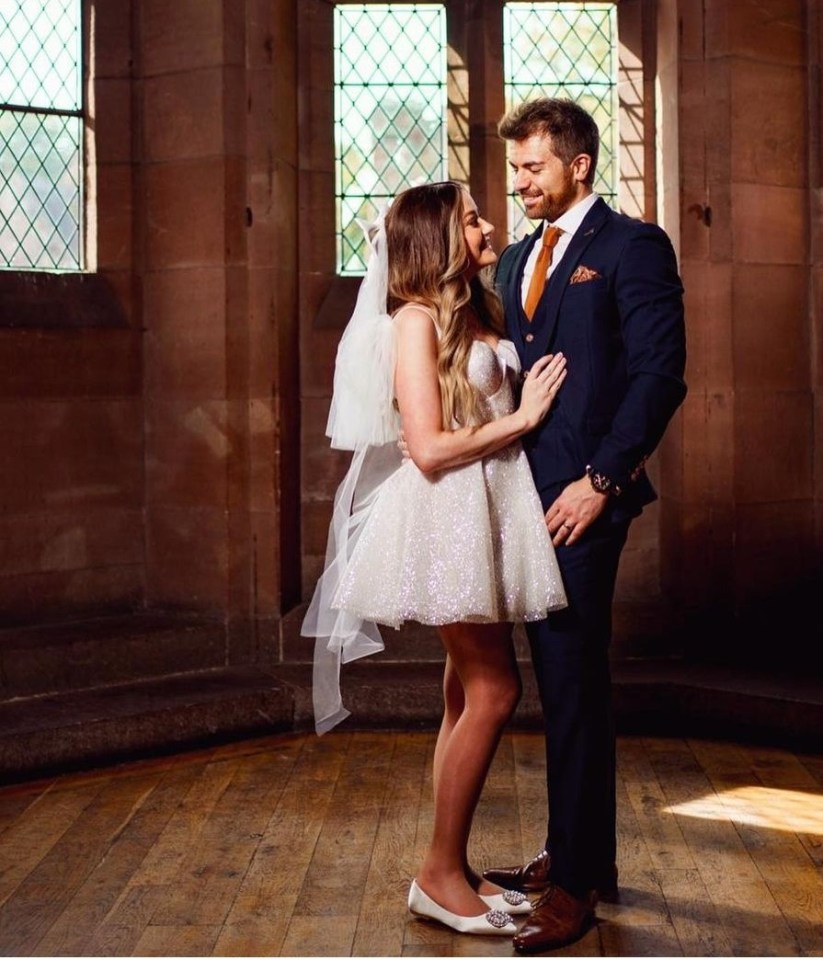
10
She was told her brain tumour was inoperableCredit: Cover Images
10
Laura began suffering seizures as her tumour spreadCredit: Cover Images
“The cancer was spreading,” she said.
“I lost feeling in my right arm and started to lose the mobility of my leg and struggled to walk. It was just awful.
“I knew the tumour was growing in my head, and I couldn’t do anything about it until my baby was safely delivered.
“I tried to keep myself distracted and remain positive every day, but I could feel myself getting worse and feared for my life.
“We didn’t really handle it very well – every day was torture. Danny just tried to keep me positive and reassured me everything would be OK.”
At 30 weeks doctors performed an emergency C-section under general anaesthetic. Sienna was 10 weeks early and tiny – but healthy.
My tumour is growing and spreading. Things are getting worse. I’m not sure how much longer I have
Laura Mahon
With her little girl safely delivered, Laura began treatment.
“I was told brain cancer is really hard to treat, especially when the tumour is inoperable,” she said.
“I went through chemo and radiotherapy, but nothing worked.
“For a long time, I knew the day would come when they’d say there was nothing more they could do for me.”
In June 2024, Laura’s health took a dramatic turn for the worse, as she suffered more than 50 seizures over the course of just three days.
Doctors were unable to stop them, and she was eventually admitted to The Walton Centre, a specialist neurology facility.
10
The family are now raising funds to cover the cost of private treatmentCredit: Cover Images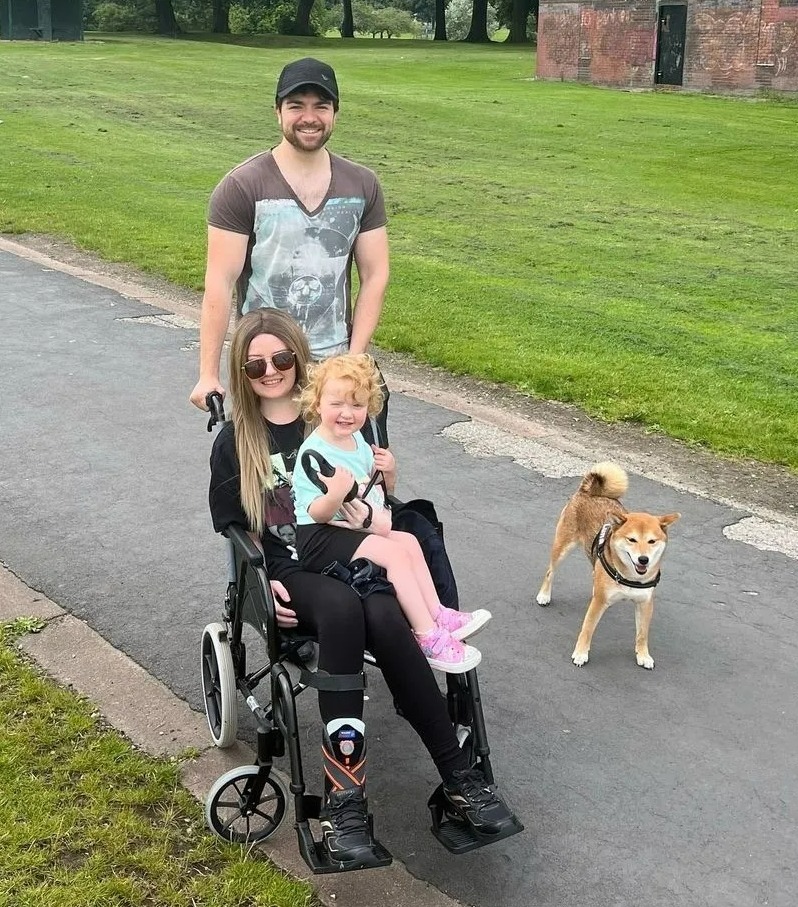
10
Laura advocates for increased funding for brain tumour researchCredit: Cover Images
Two months later, she and Danny received the news they had always feared; the NHS had no more treatment options.
“My tumour had grown significantly, and my liver function had deteriorated to the point where chemotherapy was no longer viable. But still, I refuse to give up,” she said.
The family has explored private treatment options to extend Laura’s life and give her more time with her loved ones.
Trials in London offer a glimmer of hope, but they are expensive and the family is raising money on GoFundMe to cover the cost.
On borrowed time
In the three years since her diagnosis, Laura has shared her experience on Instagram and TikTok.
She’s also spoken out about how brain cancer research is severely underfunded and more needs to be done to find treatments that can give patients like her a fighting chance.
Laura said: “Brain cancer kills more children and adults under 40 than any other cancer, yet it receives only 1 per cent of the national spend on cancer research.
“This disparity has fuelled my determination to raise awareness and funds for brain cancer research.”
Laura has endured hundreds of seizures over the years, which often leave her unconscious, disoriented, and unaware of her surroundings.
The most common symptoms of a brain tumour

More than 12,000 Brits are diagnosed with a primary brain tumour every year — of which around half are cancerous — with 5,300 losing their lives.
The disease is the most deadly cancer in children and adults aged under 40, according to the Brain Tumour Charity.
Brain tumours reduce life expectancies by an average of 27 years, with just 12 per cent of adults surviving five years after diagnosis.
There are two main types, with non-cancerous benign tumours growing more slowly and being less likely to return after treatment.
Cancerous malignant brain tumours can either start in the brain or spread there from elsewhere in the body and are more likely to return.
Brain tumours can cause headaches, seizures, nausea, vomiting and memory problems, according to the NHS.
They can also lead to changes in personality weakness or paralysis on one side of the problem and problems with speech or vision.
The nine most common symptoms are:
- Headaches
- Seizures
- Feeling sick
- Being sick
- Memory problems
- Change in personality
- Weakness or paralysis on one side of the body
- Vision problems
- Speech problems
If you are suffering any of these symptoms, particularly a headache that feels different from the ones you normally get, you should visit your GP.
Source: NHS
She takes medication to control them but the growth of the tumour means that they happen more frequently.
“Sometimes I get a slight warning that one is about to come on, but other times it just happens,” she explained
As a result, she’s no longer allowed to drive, and she would need to be seizure and tumour free for at least two years before even considering it.
“I’ve promised her a Mercedes if she can do it,” her husband Danny said with a bittersweet smile.
“My tumour is growing and spreading,” Laura said. “Things are getting worse. I’m not sure how much longer I have.”
10
The family don’t know how long Laura has leftCredit: Cover Images
10
It’s been three years since her diagnosisCredit: Cover Images

